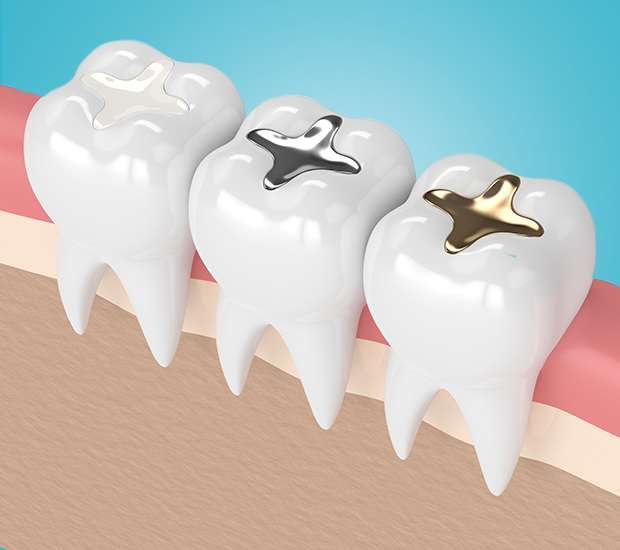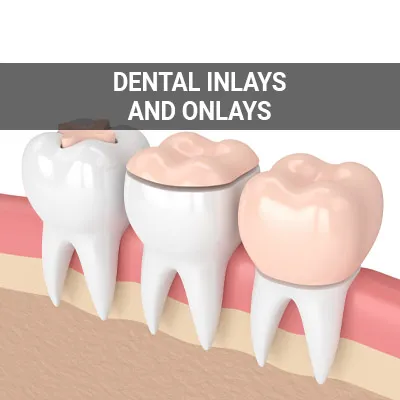Composite Fillings Dumont, NJ
Composite fillings treat cavities to protect teeth and restore oral health. There are various types of fillings that dentists can use to fill a cavity. However, composite fillings are the most common type due to their natural appearance and good durability.
If you have a tooth that requires a filling, composite fillings may be a good option. Composite fillings are available at Dumont Family Dental in Dumont and the surrounding area. Call us today at (201) 374-7202 to learn more about our services or schedule an appointment.
Composite Fillings Explained
Composite fillings have been used for decades and have steadily grown in popularity. Tooth-colored fillings consist of a resin material, which is a combination of plastic and powdered glass and typically lasts between 5-7 years. The material is applied to the tooth in layers and hardened using a special curing light. Once cured, we will smooth and polish it to prevent premature wear and tear.
A tooth-colored filling differs from other types of fillings such as gold, porcelain, and silver amalgam in several ways. Since they are color-matched to blend with natural teeth, they can fill cavities in both the front and back teeth and can also fix chips and cracks. A composite filling requires less of the tooth to be removed, which helps the tooth retain its overall structure. It can also be cleaned and repaired as necessary.
“Composite fillings have been used for decades and have steadily grown in popularity.”
The Benefits of Tooth Fillings
Tooth fillings occur commonly in dental practice. The average American has three dental fillings, and 25% have 11 or more. Fillings fix small areas of tooth decay and serve as a barrier between the teeth and harmful bacteria. The goal is to prevent further deterioration.
Fillings help restore the normal function and appearance of teeth. Since a composite filling is tooth-colored, it is an aesthetically pleasing option. It bonds to the tooth and supports the remaining structure. That helps prevent additional damage and sensitivity to extreme hot and cold temperatures.
“Fillings fix small areas of tooth decay and serve as a barrier between the teeth and harmful bacteria.”
Other Types of Fillings
Although composite fillings are the most popular type of filling, they are not always the right choice for every patient. Some people may have a specific aesthetic preference for a different kind of filling. For example, although tooth-colored fillings are more subtle, some people prefer the appearance of gold fillings. Additionally, gold and porcelain fillings are more durable than composite fillings. They may last 10 or more years longer than composite filling material. Silver amalgam may also last about five years longer than a composite filling.
According to the American Dental Association, composite fillings can also take longer to place than other types of fillings. Compared to silver amalgam, a composite filling can be more expensive. However, this may depend on insurance coverage. However, it is less costly than gold and porcelain filling. Patients should discuss the benefits and drawbacks of each option with our dentist before making a decision.
“Although composite fillings are the most popular type of filling, they are not always the right choice for every patient.”
Check out what others are saying about our dental services on Yelp: Composite Fillings in Dumont, NJ
When a Filling Is Necessary
Various situations may call for a filling. The most common is tooth decay. Typically, a filling is the least invasive procedure for correcting decay. People who have teeth with cracks, chips, and wear can also choose to have a filling to restore teeth. In some cases, a filling can also fill small holes formed for reasons other than tooth decay. Dentists sometimes offer procedures to correct discoloration or misshapen teeth for cosmetic-only purposes.
Patients of all ages can have situations that require a filling. However, these situations are less common for children who do not yet have their permanent teeth. According to the previously mentioned National Institute of Health survey, 85% of adults have at least one filling before 34. The probability of needing a filling can also vary significantly depending on oral hygiene practices.
“Patients of all ages can have situations that require a filling.”
Questions Answered on This Page
Q. What are some potential disadvantages of composite fillings?
Q. Who should get tooth fillings?
Q. What are composite fillings?
Q. What are the benefits of composite fillings?
People Also Ask
Q. How can a person's diet help with tooth decay?
Q. Why does the dentist use fluoride mouthwash in the cleaning?
Q. Why is preventative care important? How can it save you money?
Q. Beyond regular checkups, what additional procedures might a dentist recommend?
Frequently Asked Questions
Q. How long does it take to place a composite filling?
A. Compared to a traditional silver filling, a composite filling takes about 10-20 minutes longer to put into place. That depends on the size and location of the filling. You should expect to be in the dental chair for at least an hour.
Q. What are the advantages of a tooth-colored filling?
A. One of the major advantages of a tooth-colored filling is its ability to be matched to the same shade as your teeth. This provides a seamless look. Similar to other types of fillings, a composite filling also protects your tooth from further decay.
Q. What material makes up a composite filling?
A. Composite fillings comprise resin material that contains no metal. Instead, it is a mixture of powdered glass, silica, or other ceramic particles and plastic compounds. That makes it a good option for people who have metal allergies or want to avoid metal fillings.
Q. How much do composite fillings cost?
A. Composite fillings, like most other fillings, are typically covered by insurance as they are considered essential restorative procedures. However, we always recommend patients contact their insurance providers to determine any out-of-pocket costs before starting any treatment. We can also discuss any payment information during your consultation.
Q. How long do composite fillings last?
A. On average, a composite filling lasts around seven years. However, newer research has shown they can last for a decade or more if the filling is smaller and good oral hygiene practices get followed. Making regular trips to the dentist will help ensure your tooth-colored filling lasts as long as possible.
Dental Terminology
Call Us Today
If you have a tooth that requires a filling, do not hesitate to seek treatment. Our team at Dumont Family Dental can help. Call us today at (201) 374-7202 to learn more about our services or schedule an appointment.
Helpful Related Links
- American Dental Association (ADA). Glossary of Dental Clinical Terms. 2024
- American Academy of Cosmetic Dentistry® (AACD). Home Page. 2024
- WebMD. WebMD’s Oral Care Guide. 2024
About our business, and website security
- Dumont Family Dental was established in 1973.
- We accept the following payment methods: American Express, Cash, Check, Discover, MasterCard, and Visa
- We serve patients from the following counties: Bergen County
- We serve patients from the following cities: Dumont, New Milford, Bergenfield, Tenafly, Cresskill, Demarest, Haworth, Hackensack, Englewood, Teaneck, River Edge, and Paramus
- National Provider Identifier Database (1689734162). View NPI Registry Information
- Norton Safe Web. View Details
- Trend Micro Site Safety Center. View Details
Back to top of Composite Fillings











